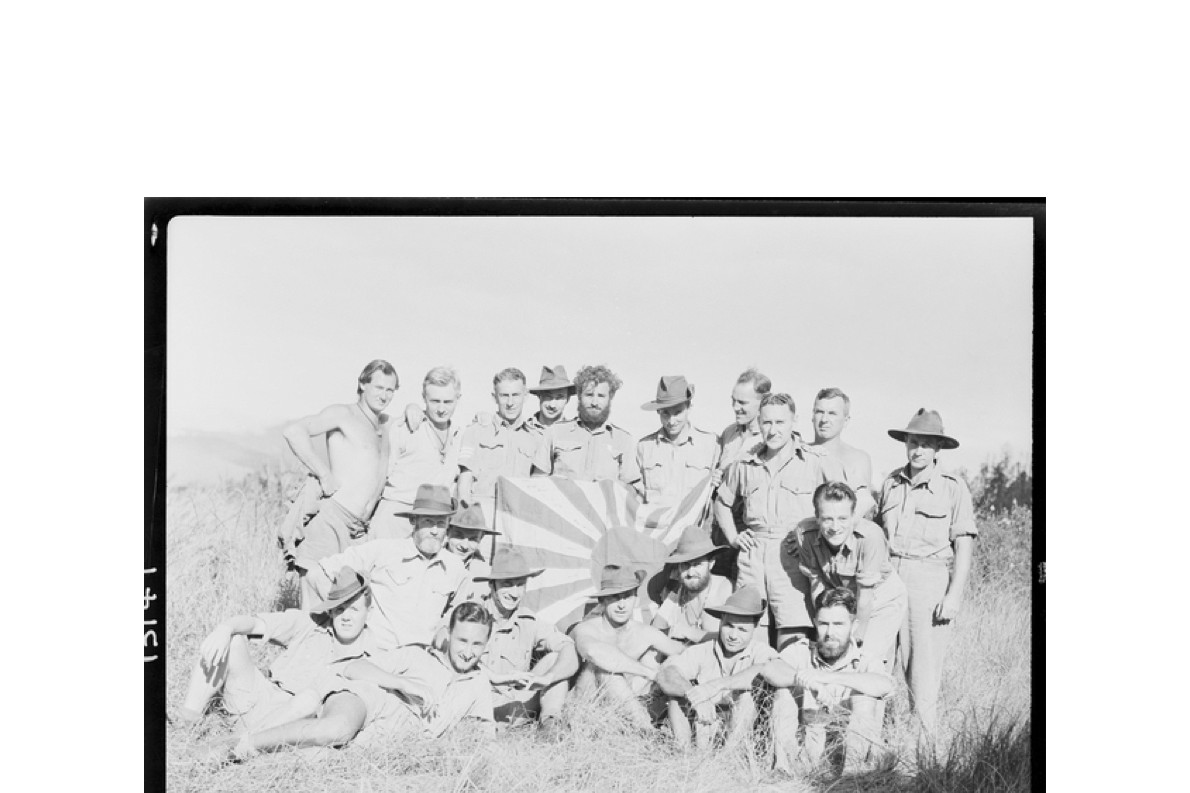General News
24 August, 2024
Veteran's Voices
Sally Bertram, RSL Military History Library. Contact Sally at sj.bertram@hotmail.com or call 0409 351 940.

Lawrence Victor Stasinowsky was born in Ouyen on March 12 1915.
His parents were Andreas Ernest Alfred Stasinowsky and Alberta Christina Huf.
In New Guinea, Bombardier Laurence Victor Stasinowsky served in the Australian Army.
Lawrence’s date of enlistment was January 31 1942.
The locality on enlistment was Wau, PNG.
His service number was NG 2316.
His next of kin was listed variously as Ella Schurmann or Mrs AC Stasinowsky of Tarrington via Hamilton.
Lawrence’s date of discharge was April 17 1946, at which time his posting was New Guinea Volunteer Rifles (NGVR).
Lawrence died on October 3 1992 in Frankston.
Lawrence also had a brother who served, Eno Leslie Stasinowsky, born in Ouyen and living before the war in Hamilton.
Eno’s service number was VX86867 (V22426) and he was a signalman.
He was discharged from 2/2 Australian Field Signal Section.
[CROSSHEAD]New Guinea Volunteer Rifles
NGVR was a volunteer Australian Army Reserve Battalion, a unit of the Australian Army, made up of Australian residents of PNG.
Its formation was authorised by the Australian Government and it was commanded by a regular Army officer in the Mandated Territory of New Guinea between September 1939 and 1943.
NGVR was raised, was mobilised, fought and was disbanded overseas.
Its headquarters were originally in Rabaul with sub-units located at Wau, Salamaua, Lae and Madang.
Fit men between the ages of 18 and 50 were accepted.
In August 1941, after the arrival of the 2/22nd Battalion (Lark Force) in Rabaul, NGVR moved its headquarters to Bulolo on the mainland, keeping a unit in Rabaul.
After Japan attacked, the battalion was placed on full-time duty and mobilised on January 21 1942.
When Rabaul was invaded on January 22 1942, NGVR was under the command of the CO of the 2/22nd Battalion and fought until resistance was pointless.
More than 80 NGVR personnel died when the Japanese prison ship Montevideo Maru was sunk in the South China Sea on July 1 1942.
A number of NGVR soldiers were massacred with about 150 others at Tol Plantation on Wide Bay in early February 1942.
When Lae and Salamaua were invaded on March 8 1942, NGVR administered law and order, assuming responsibility for several thousand indentured labourers recruited from many outlying districts who were without support and unable to return to their homes.
Establishing depots, NGVR fed the labourers and carriers who were vital in supporting the Allies in the fighting and contributing to that success.
The 2/5th Independent Company AIF, with supporting attachments, flew into Wau from Port Moresby on May 23 to reinforce NGVR and form Kanga Force.
They started a limited offensive harassing and destroying enemy personnel and equipment in the area.
Raids on Salamaua and Heath's Plantation, west of Lae, were successful.
Operations in hostile terrain without adequate supply and medication took their toll, and many fell sick with fever and tropical diseases.
The number of fit men dwindled.
Food drops were not getting through, resulting in more dependence on local food supply.
Japanese air raids, Japanese intimidation tactics over the local people and the sheer physical difficulty of getting rations forward to feed carriers threatened to stop Kanga Force activities.
When the focus shifted to Milne Bay and the Kokoda Track battles, NGVR continued to guard its posts overlooking the Japanese.
By early 1943 its numbers were so depleted that the remaining NGVR soldiers, with their knowledge of the country and its problems, were filtered into Australian New Guinea Administrative Unit, the Coastwatchers, “Z” Special Unit, the Papuan Infantry Battalion, branches of the regular AIF and US forces.
NGVR received a United States Distinguished Unit Citation as part of US-led Brewer Force engaged in a "reconnaissance in force" of the Japanese-held Los Negros Island between February 29 and March 4 1944 - the only militia battalion in the Australian armed forces ever to receive such an award.
There were 13 commanding officers from 1950 to 1973.
[CROSSHEAD]Papua New Guinea Volunteer Rifles
The 550 strong multi-racial unit PNGVR was activated on March 17 1951.
It was integrated in 1962 and presented with NGVR's World War II battle honours: Rabaul, Wau and South-West Pacific.
On May 17 1969 PNGVR was presented the Queen's and Regimental Colours at Igam Barracks, Lae.
Its members carried out topography, cultural, military observation and training of a region forces having detachments around the area.
PNGVR was disbanded on December 1 1973, its colours being laid up at the Australian War Memorial on Anzac Day 1974.
At the last annual camp held in August 1973 at Finschafen, 350 soldiers from Port Moresby, Lae, Rabaul, Goroka, Banz, Mt Hagen, Madang and Wewak attended.
After PNG's independence in 1975 most ex-NGVR and PNGVR veterans returned to Australia.
Ballarat, Hamilton, Ouyen and Mortlake all had links to NGVR servicemen who had family residing in these areas.
These servicemen are listed on the Australian War Memorial New Guinea Volunteer Rifles Nominal Roll.
With thanks: Sally Bertram, RSL Military History Library.
Contact Sally at sj.bertram@hotmail.com or call 0409 351 940.